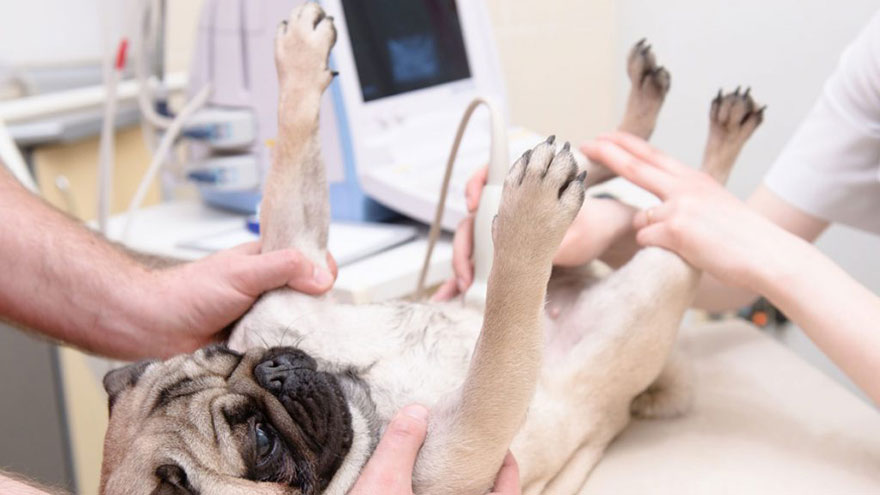Abdominal Ultrasound for Dogs
Whether your vet suspects a blockage somewhere within your dog’s intestinal tract or you’re wondering if she’s expecting puppies, the abdominal ultrasound may be the diagnostic tool the vet will use to find out. The ultrasound is noninvasive and it gives fast results, allowing your vet an advantageous head start on resolving your pet’s medical mysteries.

A High-Tech Tool
You might be more familiar with X-rays, but an ultrasound is far more sophisticated and ultimately safer. Instead of emitting harmful radiation as X-rays do, an ultrasound emits a beam of high-frequency sound waves that the technician directs toward your dog’s abdomen through a handheld probe attached to the ultrasound machine. As the technician moves the probe from place to place, the ultrasound waves emit; they may either transmit through, reflect, or absorb into tissues they encounter. Waves that reflect return as echoes converted into images that display on a monitor for evaluation.
A Thorough Checkup
Within the abdominal area, an ultrasound allows your vet to see internal organs such as the liver, spleen, pancreas, stomach, intestines, kidneys, bladder, uterus and prostate gland. The images may allow the vet to detect abnormalities such as presence of cysts and tumors, abdominal fluid and enlarged lymph nodes. If you’re hoping for puppies, an ultrasound can confirm pregnancy in a dam as early as three weeks into gestation. If a foreign object is suspected and X-rays were not conclusive, an ultrasound may help confirm or rule out a blockage.
An Insight Into the Procedure
An ultrasound is pretty trouble-free. The hair on your dog’s abdomen will be shaved. Your dog will be placed tummy up on a padded table, and a special probe, placed against the abdomen, will be moved about to examine areas of interest. The procedure generally takes 20 to 60 minutes and is pain-free. Sedation or anesthesia isn’t necessary unless your dog is particularly fractious or requires a biopsy.
An In-Depth Evaluation
One of the greatest advantages of an ultrasound is that it can spare your dog from having surgery. Should your vet discover something unusual within the abdominal cavity granting further investigation, he can always perform further testing. In an ultrasound-guided aspiration, ultrasound imaging helps guide a small needle that will suction a small sample for analysis; whereas, in an ultrasound-guided biopsy, imaging guides a biopsy instrument so a specific piece of tissue can be obtained for sample.
The Ultra Experts
Because of the many rapid advances in the diagnostic imaging field and the need for a certain amount of experience to properly use the equipment and interpret the images with accuracy, your primary veterinarian may refer you to a board-certified radiologist, a Diplomate of the American College of Veterinary Radiology who has received advanced training in diagnostic imaging including radiology, ultrasonography, computed tomography and magnetic resonance imaging.
You Might Also Like :: COPD Disease in Dogs

